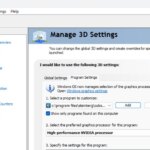Cubase has a useful feature called “disable tracks” that allows you to disable any instrument track, MIDI track, audio track, etc. to free up memory and reduce CPU load.
This feature makes it possible to operate large templates without worrying about memory or CPU load.
Specifically, you can create a template with various plug-in sound sources activated and disabled in advance, and then activate any sound source as needed.
In this way, there is no need to load a huge number of samples when starting up a project, and sound sources that have been set up can be easily called up when necessary.
There was a bug in the “disable tracks” feature
However, there is a bug in “disabling tracks,” and there have been many problems with MIDI tracks with disabled multitimbral settings that cannot be restored (enabled) properly.
For example, suppose you launch Kontakt, prepare multiple patches with MIDI channels assigned to them, and prepare a MIDI track for each patch (so-called “multi-timbral setup”).
If you disable and re-enable these tracks (the MIDI track and the instrument track on which Kontakt was launched), the connection between Kontakt and the MIDI track is broken.
Therefore, many users who were creating templates using the “disable track” feature were not using any MIDI tracks at all, but only instrument tracks (treating all sound sources as single-timbral).
This can be seen in the template explanation videos by international Cubase users.
Cubase 13 appears to have resolved the “track disable” bug
Cubase 13, released in December 2023, appears to have resolved this bug.
As far as I have tested in my environment, I have confirmed that the connection between instrument tracks and MIDI tracks is not broken and is restored as configured.
We also saw a report on Steinberg’s official message board that the track disable function now works properly.
Aside – Difference in CPU load between multi-timber and single-timber
This may vary depending on the production environment, but in my environment, I have confirmed that I can keep the CPU load low by using multi-timbral settings when using sound sources such as Kontakt and Opus (Windows 10, i5-8400, 48GB memory and all storage is SSD).
Because of this, I had been reluctant to create templates using “disable tracks” (single-timber only templates), but now that this bug has been resolved, I am considering making the transition.
This is because the VEP (Vienna Ensemble Pro) that I have been using so far has been in a state that I have never been comfortable with.
Certainly, VEP is excellent in terms of extending the limits of CPU load and switching between multiple projects, but I was dissatisfied with the fact that I had to constantly work with the large latency caused by the audio interface and VEP’s own buffers.
In terms of latency when working, Cubase’s ASIO guard (and switching to/from the real-time path) feels superior.
I will write more about this area in another article.


